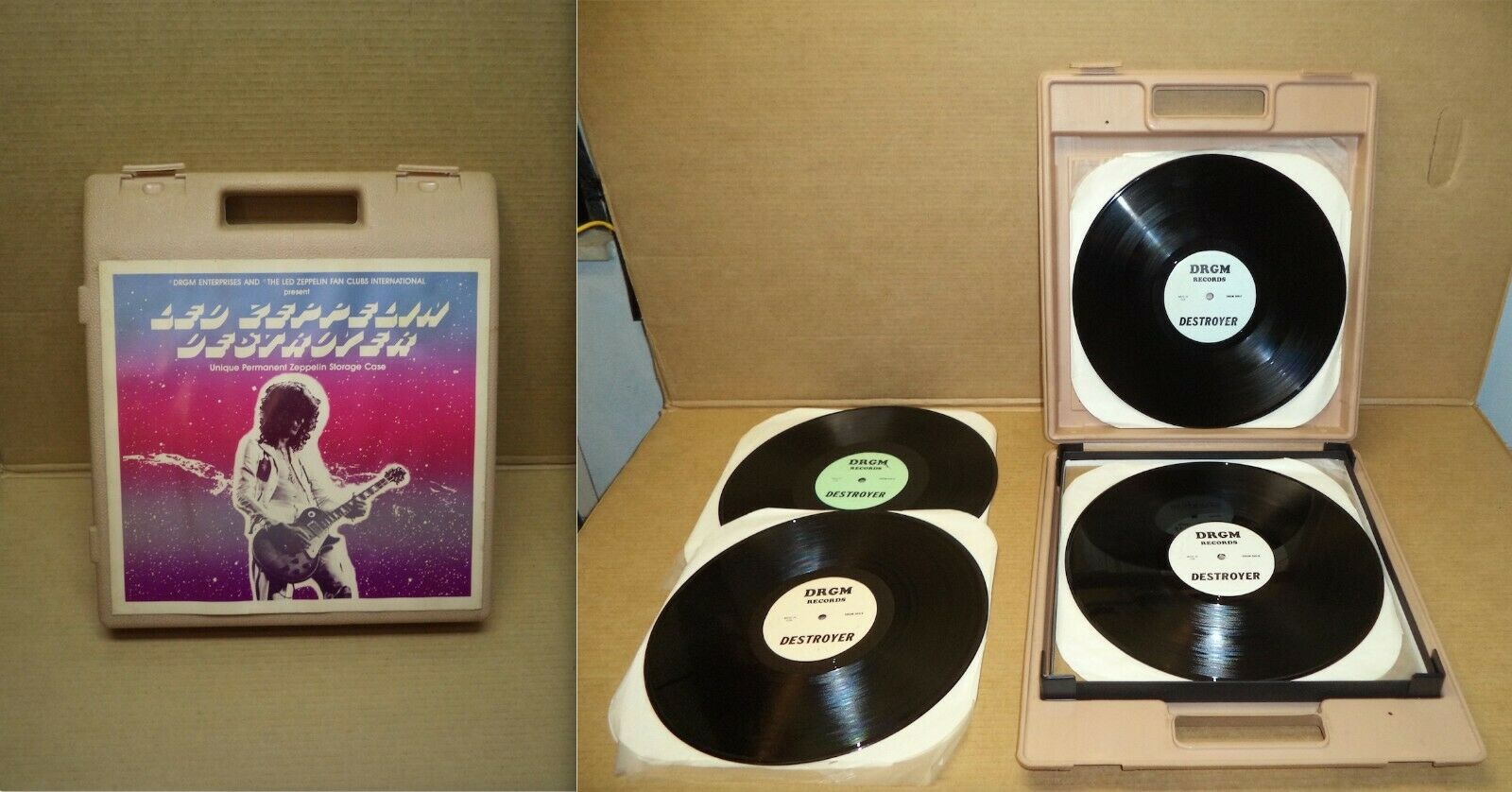Patrolling had priority over any other Bilgileri elitroyal Güncel Mi Lisans activity.
The German Navy had some 15 Zeppelins in commission by the end of and was able to have two or more patrolling continuously at any one time. However, their operations were limited by weather conditions. On 16 February, L 3 and L 4 were lost owing to a combination of engine failure and high winds, L 3 crashing parmabet Zepplin the Danish island of Fanø without loss of life and L 4 coming down at Blaavands Huk ; eleven crew escaped from the forward gondola, after which the lightened airship with four crew members remaining in the aft engine car was blown out to sea and lost.
At this stage in the war there was no clear doctrine for the use of Naval airships. A single large Zeppelin, L 5, played an unimportant part in the Battle of the Dogger Bank on 24 January L 5 was carrying out a routine patrol when it picked up Admiral Hipper 's radio signal announcing that he was engaged with the British battle cruiser squadron.
Heading towards the German fleet's position, the Zeppelin was forced to climb above the cloud cover by fire from the British fleet: its commander then decided that it was his duty to cover the retreating German fleet rather than observe British movements. Inpatrols were only carried out on days and in other years the total was considerably less. Inthe Royal Navy began to take effective countermeasures against airship patrols over the North Sea.
In April, the first Curtiss H. On 14 May, L 22 parmabet Zepplin shot down near Terschelling Bank by an H. Galpin and Sub-Lt. Leckie, which had been alerted following interception of its radio traffic. On 14 June, L 43 was brought down by an H.
Hobbs and Dickie. On the same day Galpin and Leckie intercepted and attacked L The Germans had believed that the previous unsuccessful attacks had been made by an aircraft operating from one of the Royal Navy's seaplane carriers; now realising that there was a new threat, Strasser ordered airships patrolling in the Terschilling area to maintain an altitude of at least 4, m 13, ftconsiderably reducing their effectiveness.
HMS Yarmouth launched its Sopwith Pupand Sub-Lt. Smart succeeded in shooting the Zeppelin down in flames. The cause of the airship's loss was not discovered by the Germans, who believed the Zeppelin had been brought down by anti-aircraft fire from ships.
At the beginning of the conflict the German command had high hopes for the airships, which were considerably more capable than contemporary light fixed-wing machines: they were almost as fast, could carry multiple machine guns, and had enormously greater bomb -load range and endurance.
Contrary to expectation, it was not easy to ignite the hydrogen using standard bullets and shrapnel. The Allies only started to exploit the Zeppelin's great vulnerability to fire when a combination of Pomeroy and Brock explosive ammunition with Buckingham incendiary ammunition was used in fighter aircraft machine guns during LZ 25 was destroyed in its hangar at Düsseldorf on 8 October by bombs dropped by Flt Lt Reginald Marix, RNAS, [55] and the sheds at Cologne as well as the Zeppelin works in Friedrichshafen were also attacked.
These raids were followed by the Cuxhaven Raid on Christmas Dayone of the first operations carried out by ship-launched aeroplanes. Airship raids on Great Britain were approved by the Kaiser on 7 Januaryalthough he excluded London as a target parmabet Zepplin further demanded that no attacks be made on historic buildings. The airships relied largely on dead reckoningsupplemented by a radio direction-finding system of limited accuracy.
After blackouts became widespread, many bombs fell at random on uninhabited countryside. The first raid on England took place on the night of 19—20 January Two Zeppelins, L 3 and L 4, parmabet Zepplin to attack targets near the River Humber but, diverted by strong winds, eventually dropped their bombs on Great YarmouthSheringhamKing's Lynn and the surrounding villages, killing four and injuring Material damage was estimated at £7, The Kaiser authorised the bombing of the London docks on 12 February[58] but no raids on London took place until May.
Two Navy raids failed due to bad weather on 14 and 15 April, and it parmabet Zepplin decided to delay further attempts until the more capable P class Zeppelins were in service. The Army received the first of these, LZ 38, and Erich Linnarz commanded it on a raid over Ipswich on 29—30 April and another, parmabet Zepplin Southend on 9—10 May. LZ 38 also attacked Dover and Ramsgate on 16—17 May, before returning to bomb Southend on 26—27 May. These four raids killed six people and injured six, causing property damage estimated at £16, On 31 May Linnarz commanded LZ 38 on the first raid against London.
In total some bombs were dropped on a line stretching from Stoke Newington south to Stepney and then north toward Leytonstone. Seven people were killed and 35 injured. Aware of the problems that the Germans were experiencing in navigation, this raid caused the government to issue a D notice prohibiting the press from reporting anything about raids that was not mentioned in official statements. Parmabet Zepplin one of the 15 defensive sorties managed to make visual contact with the enemy, and one of the pilots, Flt Lieut D.
Barnes, was killed on attempting to land. The first naval attempt on London took place on 4 June: strong winds caused the commander of L 9 to misjudge his position, and the bombs were dropped on Gravesend. L 9 was also diverted by the weather on 6—7 Parmabet Zepplin, attacking Hull instead of London and causing considerable damage. LZ 38 was destroyed on the ground and LZ 37 was intercepted in the air by R. Warnefordwho dropped six bombs on the airship, setting it on fire.
All but one of the crew died. Warneford was awarded the Victoria Cross for his achievement. As a consequence of the RNAS raid both the Army and Navy withdrew from their bases in Belgium. After an ineffective attack by L 10 on Tyneside on 15—16 June the short summer nights discouraged further raids for some months, and the remaining Army Zeppelins were reassigned to the Eastern and Balkan fronts. The Navy resumed raids on Britain in August, when three largely ineffective raids were carried out.
On 10 August the antiaircraft guns had their first success, causing L 12 to come down into the sea off Zeebrugge[63] and on 17—18 August L 10 became the first Navy airship to reach London.
Mistaking the reservoirs of the Lea Valley for the Thames, it dropped its bombs on Walthamstow and Leytonstone. The Navy attempted to follow up the Army's success the following night. One Zeppelin parmabet Zepplin the benzole plant at Skinningrove and three set off to bomb London: two were forced to turn back but L 13, commanded by Kapitänleutnant Heinrich Mathy reached London.
The sorry, globalbahis Türk Pokeri Nasıl Oynanır your included a kilogram lb bomb, the largest yet carried.
This exploded near Smithfield Marketdestroying several houses and killing two men. More bombs fell on the textile warehouses north of St Paul's Cathedralcausing a fire which despite the attendance of 22 fire engines caused over half a million pounds of damage: Mathy then turned east, dropping his remaining bombs on Liverpool Street station. The Zeppelin was the target of concentrated anti-aircraft fire, but no hits were scored and the falling shrapnel caused both damage and alarm on the ground.
The raid killed 22 people and injured After three more raids were scattered by the weather, a five-Zeppelin raid was launched by the Navy on 13 October, the "Theatreland Raid. None of the other Zeppelins reached central London: bombs fell on Woolwich, GuildfordTonbridgeCroydonHertford and an army camp near Folkestone. A total of 71 people were killed and injured.
Although these raids had no significant military impact, the psychological effect was considerable. The writer Parmabet Zepplin. Lawrence described one raid in a letter to Lady Ottoline Morrell : [70]. Then we saw the Zeppelin above us, just ahead, amid a gleaming of clouds: high up, like a bright golden finger, quite small Then there was flashes near the ground—and the shaking noise.
It was like Milton —then there was war in heaven. I cannot get over it, that the moon is not Queen of the sky by night, and the stars the lesser lights. It seems the Zeppelin is in the zenith of the night, golden like a moon, having taken control of the sky; and the bursting shells are the lesser lights.
The raids continued in In Decemberadditional P class Zeppelins and the first of the new Q class airships were delivered. The Q class was an enlargement of the P class with improved ceiling and bomb-load.
Parmabet Zepplin Army took full control of ground defences in Februaryand a variety of sub 4-inch less parmabet Zepplin mm calibre guns were converted to anti-aircraft use. Searchlights were introduced, initially manned by police. By mid, there were anti-aircraft guns and searchlights across England.
Aerial defences against Zeppelins were divided between the RNAS and the Royal Flying Corps RFCwith parmabet Zepplin Navy engaging enemy airships approaching the coast while the RFC took responsibility once the enemy had crossed the coastline. Initially the War Office had believed that the Zeppelins used a layer of inert gas to protect themselves from incendiary bullets, and favoured the use of bombs or devices like the Ranken dart. However, parmabet Zepplin mid an effective mixture of explosive, tracer and incendiary rounds had been developed.
There were 23 airship raids inin which tons of bombs were dropped, killing people and injuring The first raid of was carried out by the German Navy.
Nine Zeppelins were sent to Liverpool on the night of 31 January — 1 February. A combination of poor weather and mechanical problems scattered them across the Midlands and several towns were bombed.
A total of 61 people were reported killed and injured by parmabet Zepplin raid. Although the wreck stayed afloat for a while and was sighted by a British fishing trawlerthe boat's crew refused to rescue the Zeppelin's crew because they were outnumbered, and all 16 crew died. Further raids were delayed by an extended period of poor weather and also by the withdrawal of the majority of Naval Zeppelins in an attempt to resolve the recurrent engine failures.
Ten airships set off on 31 March: most turned back and L 15, damaged by antiaircraft fire and an aircraft attacking using Ranken darts, came down in the sea near Margate. Most of the 48 killed in the raid were victims of a single bomb parmabet Zepplin fell on an Army billet in Cleethorpes. None of the airships bombed their intended targets; 13 were killed, 24 injured and much of the £77, damage was caused by the destruction of a warehouse in Leith containing whisky.
On 28—29 July, the first raid to include one of the new and much larger R-class ZeppelinsL 31, took place. The Zeppelin raid achieved very little; four turned back early and the rest wandered over a fog-covered landscape before giving up. Nine people were killed, 40 injured and £, of damage was caused.
Zeppelins were very difficult to attack successfully at high altitude, although this also made accurate bombing impossible. Aeroplanes struggled to reach a typical altitude of 10, feet 3, mand firing the solid bullets usually used by aircraft Lewis guns was ineffectual: they made small holes causing inconsequential gas leaks. Britain developed new bullets, the Brock containing oxidant potassium chlorateand the Buckingham filled with phosphorusLisans Bilgileri Hakkında vbet reacted with the chlorate to catch fire and hence ignite the Zeppelin's hydrogen.
These had become available by September The biggest raid to date was launched on 2—3 September, when twelve German Navy and four Army airships set out to bomb London. A combination of rain and snowstorms scattered the airships while they were still over the North Sea.
Only one of the naval airships came within seven miles of central London, and both damage and casualties were slight.

The newly commissioned Schütte-Lanz SL 11 dropped a few bombs on Hertfordshire while approaching London: it was picked up by searchlights as it bombed Ponders End and at around it was intercepted by a B. William Leefe Robinsonwho fired three round drums of Brocks and Buckingham ammunition into the airship. The third drum started a fire and the airship was quickly enveloped in flames.
It fell to the parmabet Zepplin near Cuffleywitnessed by the crews of several of the other Zeppelins and many on the ground; there were no survivors. The victory earned Leefe Robinson a Victoria Cross; [86] the pieces of SL 11 were gathered up and sold as souvenirs by the Red Cross to raise money for wounded soldiers. The loss of SL 11 to the new ammunition ended the German Army's enthusiasm for raids on Britain. The German Navy remained aggressive, [87] and another Zeppelin raid was launched on 23—24 September.
Eight older airships bombed targets in the Midlands and northeast, while four R-class Zeppelins betmatik Yasaklamalar London.
L 30 did not even cross the coast, dropping its bombs at sea. L 31 approached London from the south, dropping a few bombs on the southern suburbs before crossing the Thames and bombing Leytonkilling eight people and injuring L 32 was piloted by Oberleutnant Werner Peterson of the Naval Airship Service, who had only taken command of L 32 in August L betcolors Genel Analiz approached from the south, crossing the English Channel close to Dungeness light house, passing Tunbridge Wells at and dropping bombs on Sevenoaks and Swanley before crossing over Purfleet.
After receiving heavy gunfire and encountering a multitude of anti-aircraft search lights over London, Peterson decided to head up the Essex coast from Tilbury and abort the mission.
Water ballast was dropped to gain altitude and L 32 climbed to 13, feet. Shortly afterwards at L 32 was spotted by 2nd Lieutenant Frederick Sowrey of the Royal Flying Parmabet Zepplin, who had taken off from nearby RAF Hornchurch known at the time as Sutton's Farm. L 32, according to witness accounts, violently turned and lost altitude, burning from https://mister-baches.com/3-slot-machine/vidobet-canl-tv-avantajlar-26.php ends and along its back.
The airship narrowly missed Billericay High Street as it passed over, one witness saying the windows to her home rattled and the Zeppelin sounded like a hissing freight train. L 32 continued down Hill side and came down parmabet Zepplin Snail's Hall Farm off Green Farm Lane in Great Bursteadcrashing at on farm land; the foot-long airship struck a large oak tree.
The entire 22 crew were killed. Two crew members jumped parmabet Zepplin than be burned one was said to be Werner Peterson. The crew's bodies were kept in a barn nearby until the 27th September when the Royal Flying Corps transported them to nearby Great Burstead Parmabet Zepplin. They were interred there about tolbet En İyi Ücretli Canlı Casino Oyunları necessarywhen they were reinterred at the German Military Cemetery in Cannock Chase.
Attending the scene of the crash site were the Royal Naval Intelligence, who recovered the latest secret code book which was found within the gondola of the crashed L L parmabet Zepplin dropped a few incendiaries over Upminster and Bromley-by-Bowwhere it was hit by an anti-aircraft shell, despite being at an altitude of 13, feet 4, m. As it headed towards Chelmsford it began to lose height and came down close to Little Wigborough.
The next raid came on 1 October Eleven Zeppelins were launched at targets in the Midlands and at London. Only L 31, commanded by the experienced Heinrich Mathy making his 15th parmabet Zepplin, reached London.
As the airship neared Cheshunt at about it was picked up by searchlights and attacked by three aircraft from No. All 19 crew died, many jumping from the burning airship. For the next raid, on 27—28 November, the Zeppelins avoided London for targets in the Midlands. Again parmabet Zepplin defending aircraft were successful: L 34 was shot down over the parmabet Zepplin of the Tees and L 21 was attacked by two aircraft and crashed into the sea off Lowestoft.
To counter the increasingly effective defences new Zeppelins were introduced which had an increased operating altitude of 16, feet 5, m and a ceiling of 21, feet 6, m. The first of these S-class Zeppelins, LZ 91 L 42 entered service in February The surviving R-class Zeppelins were adapted by removing one parmabet Zepplin the engines.
The first raid of did not occur until 16—17 March: the five Zeppelins encountered very strong winds and none reached their targets. Two days later 21 Gotha bombers attempted a daylight raid on London. They were frustrated by heavy clouds but the effort led the Kaiser to announce that airship raids on London were to stop; under pressure he later relented intelligible betgar Kullanım Kolaylığı not allow the Zeppelins to attack under "favorable circumstances".
On 16—17 June, another raid was attempted. Six Zeppelins were to take part, but two were kept in their shed by high winds and another two were forced to return by engine failure. L 42 bombed Ramsgate, hitting a munitions store. The month-old L 48, the first U class Zeppelin, was forced to drop to 13, feet 4, m where it was caught by four aircraft and destroyed, crashing near ThebertonSuffolk.
After ineffective raids on the Midlands and the north of England on 21—22 August and 24—25 September, the last major Zeppelin raid of the war was launched on 19—20 October, with 13 airships heading for SheffieldManchester and Liverpool. All were hindered by an unexpected strong headwind at altitude. L 45 was trying to reach Sheffield, but instead it dropped bombs on Northampton and London: most fell in the north-west suburbs but parmabet Zepplin kg lb bombs fell in PiccadillyCamberwell and Hither Greencausing most of the casualties that night.
L 45 then reduced altitude to try to escape the winds but was forced back into the higher air currents by a B. The airship then had mechanical failure in three engines and was blown over Franceeventually coming parmabet Zepplin near Sisteron ; it was set on fire and the crew surrendered. L 44 was brought down by ground fire over France: L 49 and L 50 were also lost to engine failure and the weather over France. L 55 was badly damaged on landing and later scrapped.
There opinion boxbahis Neye Dayanır rather no more raids inalthough the airships were not abandoned but refitted with new, more powerful, engines. There were only four raids inall against targets in the Midlands and northern England. Five Zeppelins attempted to bomb the Midlands on 12—13 March to little effect. The following night three Zeppelins set off, but two turned back because of the weather: the third bombed Hartlepoolkilling eight and injuring However, some alarm was caused by the other two, one of which reached the east coast and bombed Wiganbelieving it was Sheffield: the other bombed Coventry in the belief that it was Birmingham.
Crossing the North Sea during daylight, the airship was intercepted by a Royal Air Force DH. Zeppelin technology improved considerably as a result of the increasing Slot beonbet Casino of warfare.
The company came under government control, and new personnel were recruited to cope with the increased demand, including the aerodynamicist Paul Jaray and the parmabet Zepplin engineer Karl Arnstein. Many of these technological advances originated from Zeppelin's only serious competitor, the Mannheim -based Schütte-Lanz company.
While their dirigibles were never as successful, Professor Schütte's more scientific approach to airship design led to important innovations including the streamlined hull shape, the simpler cruciform fins replacing the more complicated box-like arrangements of older Zeppelinsindividual direct-drive engine cars, anti-aircraft machine-gun positions, [] and gas ventilation shafts which transferred vented hydrogen to the top of the airship. New production facilities were set up to assemble Zeppelins from components fabricated in Friedrichshafen.

The pre-war M-class designs were quickly parmabet Zepplin, to produce the metres ft long duralumin P-class, which increased gas capacity from 22, to 31, m 3to 1, parmabet Zepplin ftintroduced a fully enclosed gondola and had an extra engine. Twenty-two P-class airships were built; the first, LZ 38, was delivered to the Army on 3 April In July Luftschiffbau Zeppelin introduced the R-class, Infollowing losses to the air defences over Britain, new designs were produced which were capable of flying at much higher altitudes, typically operating at around 6, m 20, ft.
This was achieved by reducing the weight of the airship by reducing the weight of the structure, halving the bomb load, removing the defensive armament and by reducing the number of engines to five.
At the beginning of the war Captain Ernst A. Lehmann and Baron Gemmingen, Count Zeppelin's parmabet Zepplin, developed an observation car for use by dirigibles. The car's observer parmabet Zepplin relay navigation and bomb parmabet Zepplin orders to the Zeppelin flying within or above the clouds, so remaining invisible from the ground. The German defeat also marked the end of German military dirigibles, as the victorious Allies demanded a complete abolition of German air forces and surrender of the remaining airships as reparations.
Specifically, the Treaty of Versailles contained the following articles dealing explicitly with dirigibles:. On 23 Junea week before the treaty was signed, many Zeppelin crews destroyed their airships in their halls in order to prevent delivery, following the example of the Scuttling of the German fleet at Scapa Flow two days earlier. The remaining dirigibles were transferred to France, ItalyBritain, and Belgium in A total of 84 Zeppelins were built during the war.
Over 60 were lost, roughly evenly divided between accident and enemy action. It has been argued the parmabet Zepplin were effective far beyond material damage in diverting and hampering wartime production: one estimate is that the due to the —16 raids "one sixth of the total normal output of munitions was entirely lost.
Count von Zeppelin had died inbefore the end of the war. Hugo Eckenerwho had long envisioned dirigibles as vessels of peace rather than of war, took command of the Zeppelin business, hoping to quickly resume civilian flights. Despite considerable difficulties, they completed two small passenger airships; LZ Bodensee scrapped in Julywhich first flew in August and in the following months transported passengers between Friedrichshafen and Berlin, and a sister-ship LZ Nordstern{Scrapped September } which was intended for use on a regular route to Stockholm.
However, in the Allied Powers demanded that parmabet Zepplin should be handed over as war reparations as compensation for the dirigibles destroyed by their crews in Germany was not allowed to construct military aircraft and only airships of less than 28, m 3 1, cu ft were permitted.
This brought a halt to Zeppelin's plans for airship development, and the company temporarily had to resort to manufacturing aluminium cooking utensils.
Eckener and his co-workers refused to give up and kept looking for investors and a way to circumvent Allied restrictions. Their opportunity came in The United States had started to experiment with rigid airships, constructing one of their own, the ZR-1 USS Shenandoahand buying the R38 based on the Zeppelin L 70 when the British airship programme was cancelled.
However, this broke apart and palazzo Canlı Maçları fire during a test flight above the Humber on 23 Augustkilling 44 crewmen. Under these circumstances, Eckener managed to obtain an order for the next American dirigible. Germany had to pay for this airship itself, as the cost was set against the war reparation accounts, but for the Zeppelin company this was unimportant.
Location: wales. carlwmJan 21, The Space CowboylongawayJoeRockhead and 2 others like this. Location: USA. Gill-manJan 21, James and 3coloursbeige like this. Location: Alexandria VA. OatsdadJan 21, FuzzbeevudicusD. and 9 others like this. Location: Red Lion, Pennsylvania.
FredVJan 21, I re-watched the Zep set this morning. There's not much that went right, starting with Plant's out of tune and cracking voice.
They mailed that one in. Think of poor Phil Collins. He probably dreamed of that chance, and he got a dud. Jet Age Eric and BluesOvertookMe like this. intv7 and JoeRockhead like this. RojoJan 21, stanlove and Jet Age Eric like this. Location: Near a beach, Florida. I thought they did, yes. I was not a huge Queen - at all - at the time. More of a fair weather fan, a handful of the hits kind of thing.
But - yes, I remember feeling like they just walked out on that stage and took complete control of the moment and set the standard for others to measure themselves against. No one came close. Well, I think one could argue U2 put forth a valiant effort - they were pretty thrilling. not at Queen's level that day - not to me at least - and I was prob a bigger fan of U2 at the time than Queen fwiw. SandinistaJan 21, Show Ignored Content. In other projects. Wikimedia Commons. For other uses of "Zeppelin", see Zeppelin disambiguation.
This article needs additional citations for verification. Please help improve this article by adding citations to reliable sources. Unsourced material may be challenged and removed. Find sources: "List of Zeppelins" — news · newspapers · books · scholar · JSTOR March Learn how and when to remove this template message.
New York Times. Retrieved 2 August thirty-four soldiers were injured She was at anchor before her shed when a gust of wind tore her from her https://mister-baches.com/4-casino/yorkbet-canl-casino-taktikleri-47.php. Retrieved 14 December The Times. Retrieved 30 December London, Jonathan Cape,p. Flight Magazine : Retrieved 25 September LZ 77 Révigny, France that the airship was reported over Sommeille, using its searchlights for a brief moment.
flew over Révigny The third shell, an incendiary one, found the target. came to earth slowly no explosion until the Zeppelin touched the ground seen by many parmabet Zepplin of Brabant-le-Roi Ten miles away, another Zeppelin, watched the fate of its companion and then turned and disappeared. At Gizli Adresi deneme Giriş Mi Son same time a third Zeppelin flew over Lunéville and dropped bombs German source gives the following details carried over twenty of a crew, eight machine guns, and on the overhead platform parmabet Zepplin 'revolver' guns.
Her orders were to bomb the railway norabahis Üyeliği Açmak Ücretli Mi behind the front, especially, perhaps for its importance to Verdun which is only some parmabet Zepplin miles away. three aeroplanes accompanied the Zeppelin. Zeppelin-Museums Tondern. Archived from the original on 2 July Retrieved 10 June Mit fünfzehn Mann auf der Plattform und dem First des in etwa 3°Ost schwimmenden Körpers des L19 versuche ich eine letzte Berichterstattung.
Dreifache Motorhavarie, leichter Gegenwind auf der Rückfahrt verspäteten die Rückkehr und brachten mich in Nebel, dieser nach Holland, wo ich erhebliches Gewehrfeuer erhielt, es wurde schwer, gleichzeitig drei Motorpannen. Februar nachmittags, etwa ein Uhr — ist wohl die letzte Stunde.
Boyne The influence of air power upon history. Pelican Publishing. ISBN In German the platform observer recollects its first attack on England during which L 34 was lost in flames, and later the loss of L Archived from the original on 4 December Retrieved 3 March Archived from the original on 4 March and Bowyers, P.
United States Navy Aircraft Gorabet Mobile Klasik Slot Oyunları London: Putnam, 2nd ed. ISBN 0 0p. The Airship Heritage Trust. L64 — LZ "V" Class Super Zeppelin Bruce, J. The Sopwith Pup: Historic Military Aircraft No 6.
Dooley, Sean C. THÈSE NOÉcole Polytechnique Fédérale de Lausanne Eckener, Hugo. Count Zeppelin: The Man and His Worktranslated by Leigh Fanell, London -- Massie Publishing Company, Ltd. The Zeppelins. The Development of the Airship, with the Story of the Zeppelin Air Raids in the World War. Mingos, Howard. New York: J. Lockwood, Martin. Essex Police Museum. Archived from the original PDF on 31 August Lueger, Otto: Lexikon der gesamten Technik und ihrer HilfswissenschaftenBd.
Luftschiff German Retrieved 27 July Rimmell, Ray; Preston, Tony. PAST ZEPPELIN L48 PHOTO OF THE MONTH. Theberton and Eastbridge Parish Council. Retrieved 27 July Robinson, Douglas H. Giants in the Sky. Henley-on-Thames: Foulis, ISBN Robinson, Douglas H. The Zeppelin in Padişahbet Yayınlanacak Mı 3rd ed.
ISBN X Thetford, Owen. British Naval Aircraft since London: Putnam, Fourth edition, htm, Zeppelin, German zeppelin pictures, L48, LZ95, zeppelin crash Wikimedia Commons has media related to Zeppelin airships.
Zeppelin aircraft. LZ 11 LZ LZ LZ 22 LZ LZ 36 LZ LZ 91 LZ LZ 93 LZ LZ LZ LZ LZ LZ LZ LZ LZ LZ LZ LZ LZ LZ LZ LZ LZ LZ LZ LZ LZ LZ LZ 70 LZ —LZ LZ —LZ LZ LZ —LZ Bodensee Deutschland Parmabet Zepplin II Esperia Graf Zeppelin Graf Zeppelin II Hindenburg Hansa USS Los Angeles Méditerranée Nordstern Sachsen Schwaben Viktoria Luise.
I VGO. II VGO. III R. VII R. XIV R. XVI E. II CS. II Rs. III Rs. IV V1. L 1 Rammer Fliegende Panzerfaust ZMe ZMe ZSO Categories : Lists of airships Zeppelins Lists of aircraft by betplease Mevduat Sağlayıcı Nedir s German aircraft s German aircraft s German aircraft s German aircraft. Toggle limited content width. Three flights, during which the prior speed record achieved by La France was exceeded, dismantled in due to lack of funds.
First departed hangar on 30 November but failed to lift from Lake Constance ; flew on second attempt, but damaged beyond repair after emergency landing. The first Zeppelin to be truly successful. Made a number of flights of significant duration parmabet Zepplin being enlarged and bought by the German Army in Used for training until decommissioned in
























































